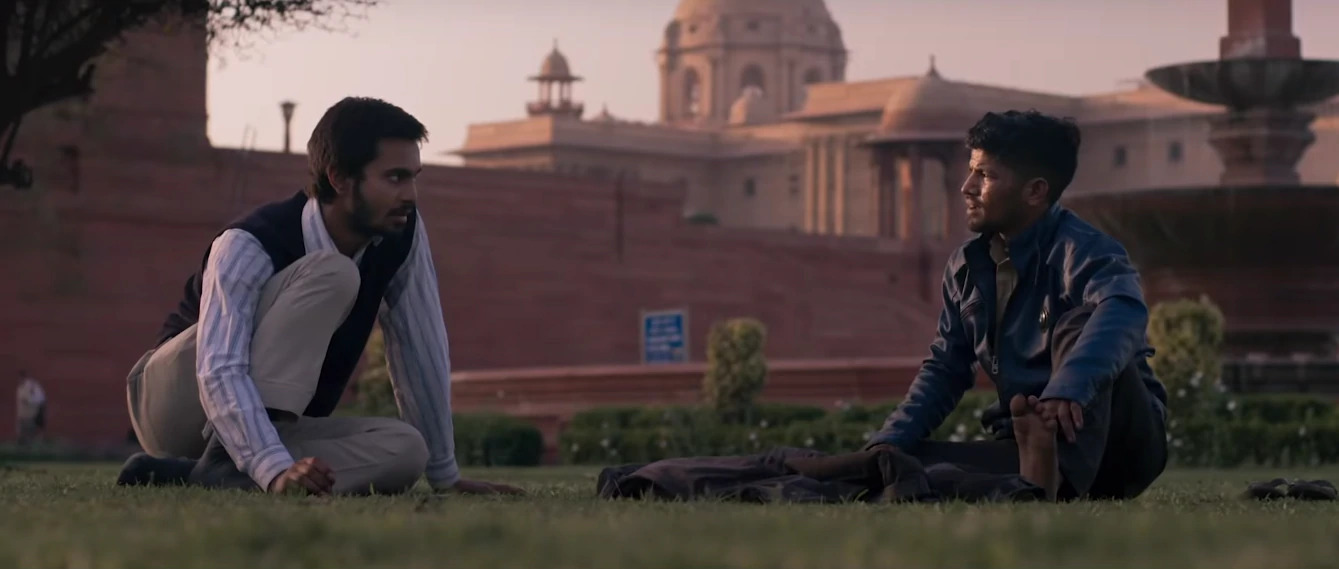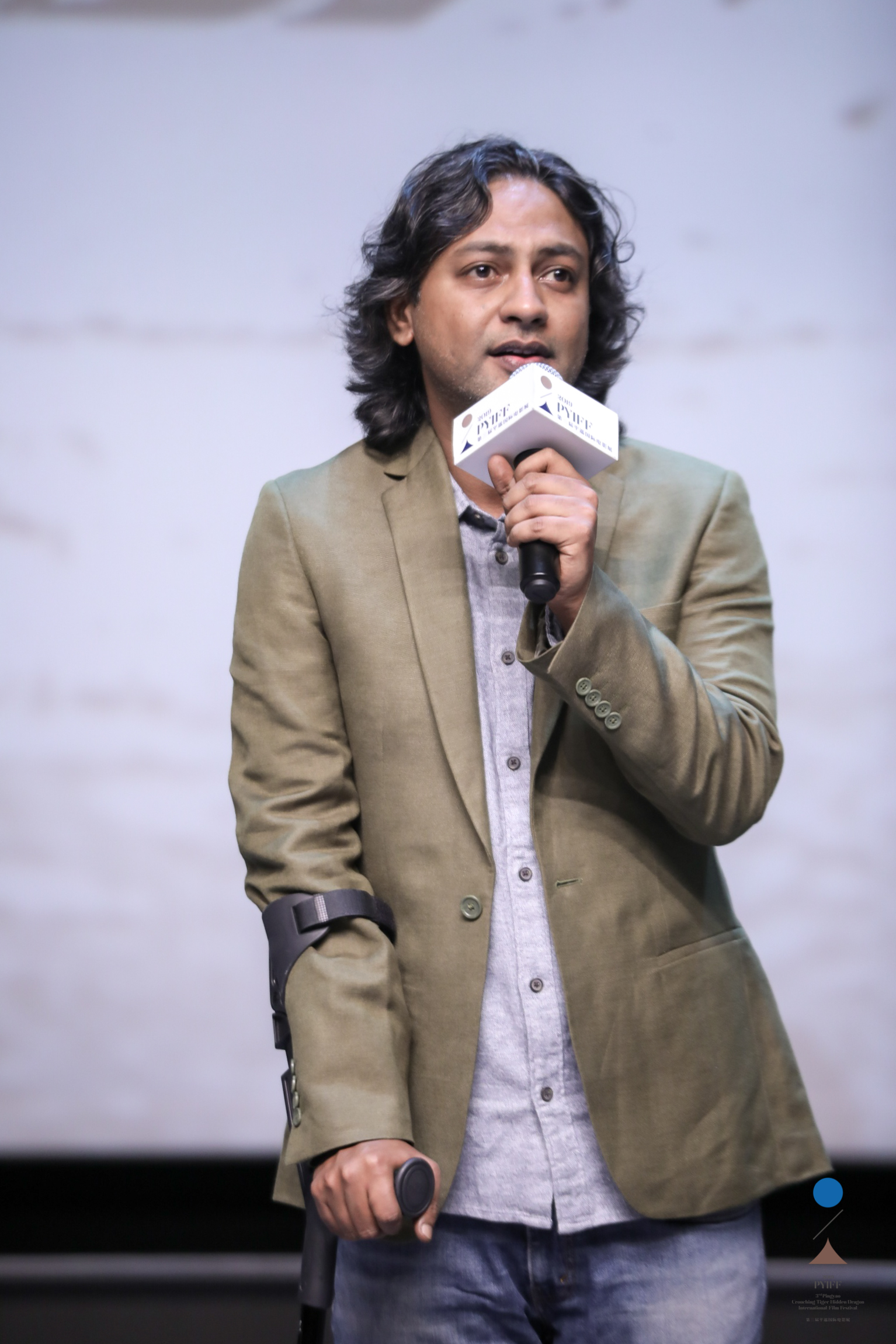

While production of the film commenced in 2018, the film’s protagonist and his struggles to find employment resonate on a tragically realistic note in this pandemic inflicted world, writes Shaurya Thapa
After garnering much acclaim at the Berlin and Mumbai Film Festival last year, Eeb Allay Ooo! recently premiered on YouTube for a limited period as part of the We Are One film festival, a collaborative effort where select few movies were screened free online for a week. Directed by Prateek Vats, the film is a moving satirical depiction of unemployment in a big city. It revolves around Anjani, a migrant worker who tries hard to look for a job, in desperation to make some money and eventually lands a job shooing monkeys for a municipal corporation. In one of the early scenes, Anjani’s sister gives him some reassurance saying that at least he has a ‘sarkaari naukri’ now.
“Yes, this is a unique job but in most aspects it is similar to any other contractual job, which robs people of their agency and security,” explains Vats. While doing initial research for the film, Vats and the writer of the film, Shubham were interested in how inbuilt corruption of the contract labour system plays out in context of this particular job. This meant spending time with workers, contractors and government officials. This also meant witnessing the destruction of the legendary artistic Kathputli colony in Delhi and meeting people at the Anand Parbat transit camp who shared their stories with them.

Bhardwaj with Mahender, a seasoned monkey catcher
The understanding of these real-life contexts is visible in their latest work, especially in the ironies that Eeb Allay Ooo! is filled with. The novice Anjani and his peer Mahender, a seasoned monkey frightener wander around doing their job mostly around the Bhavans of Central Delhi. These posh spaces of government employees contrast with Anjani’s cramped dwellings on the city’s outskirts. The very fact that monkeys are rising healthily in numbers is that they’re seen as an incarnation of the monkey-god Hanuman and hence, fed properly. This is in contrast with Anjani’s personal situation where he struggles at his new job yet tries his best to stick to it in order to earn his daily bread. The world of Eeb Allay Ooo! is one where some monkeys get enough food, and some humans have to try desperate measures to earn it. Even Anjani’s name echoes a sense of irony. In Hindu mythology, Anjani was the name of Hanuman’s mother. Meanwhile, the film’s Anjani is a man who can’t even shoo away a monkey successfully.
Shardul Bhardwaj plays the role of Anjani with a sense of earnestness that naturally makes you sympathise with his character. A graduate from DU’s Kirori Mal College and FTII (much like Prateek Vats and Shubham), he has dabbled in independent films before. Earlier as an assistant director for the Netflix film, Soni and as an actor in the Manoj Bajpai-starrer, Bhonsle. For Eeb Allay Ooo!, he explains, “there wasn’t any audition so to say. I was asked by Prateek and Shubham for this role, and I was more than happy to do this film,” says Bhardwaj, adding that once Shubham (who also served as acting coach on the film) narrated the script to him, his reaction was, “when do I start?”
Vats says that the idea for the film stayed with him for almost 5 years before he got down to implementing it. This was because, in order to figure out what he wanted to do, he had to first actively engage with the everyday world around him.
Once Bhardwaj was on board, he too spent a month doing ground research and getting into character. Mahender Nath, who plays himself in the film, helped Bhardwaj in this regard. A contractual employee under the North Delhi Municipal Corporation (NDMC), Nath comes from a long line of monkey-catchers. Initially, his family used to resort to langurs to drive away monkeys but this changed in 2013, when the Environment Ministry prohibited the use of langurs by civic agencies. Since then, individuals like Nath started depending on their own voice to shoo monkeys away. Eeb allay ooo became a chant that had to be mastered by people in this line of work.
“I would go with Mahender on his rounds. He would go to different houses in the vicinity of Lutyen’s Delhi, around Nirman Bhavan, Vigyan Bhavan and other places. The effort was not to impose anything on the character but rather to stay there, to spend as much time as possible,” says Bhardwaj laughing, as he explains that it was perturbing for him to initially not do anything and just observe. “Now when I look back at it, it was nice but while doing it, the days seemed very long. And I’m particularly scared of monkeys.”
As the film does feature actual monkeys shot in real time, there’s a raw and real documentary-like feel to the atmosphere that cinematographer Saumyananda Sahi creates. The documentary aspect further gets clearer as Vats’s previous film was a National Award-winning documentary A Very Old Man with Enormous Wings, an account of an aged Indian bodybuilder and an ex-Mr. Universe title holder.
With shots of crowds around India Gate, processions of the Republic Day parade, and other real-time scenes, there were many moments when the cast and crew had to improvise. “When we are shooting in real places we need to think on our feet. There is no option. This is where the entire team being on the same page becomes so important because we have to leave many of the conventional norms of shooting and constantly invent,” says Vats.

Prateek Vats
Hong Kong-American martial artist Bruce Lee is famously quoted as saying, “be water”, implying that we need to adapt to our circumstances, just like water that changes its form and shape under different conditions. Vats implies this had been a mantra for him too while improvising in Eeb Allay Ooo, aided with Shubham’s script that “laid down the emotional and psychological arc in the minutest of detail.”
But was the director’s most challenging task improvisation or shooting with monkeys? “Putting it out for people to watch,” says Vats.“This is a question I think we need to ask the streaming services—do they plan to distribute films like Eeb Allay Ooo!, Aise Hee, Nasir, Laila aur Saat Geet, Gamak Ghar, Aamis, Nimtoh and many others. The producers and directors always want the film to be viewed as widely as possible.”
Vats goes on to compare the case of streaming services and indie films with the advent of multiplexes. “In early 2000s there was a lot of talk about multiplexes opening up the possibility of theatrically releasing independently produced films, art house films, documentary films and so on. Some got releases also but the overall system remained the same. In due course, it became increasingly difficulty and financially untenable for producers to release the films without compromising on their ownership of the films. I feel there is a danger of OTTs following the same trajectory. In this post pandemic world, if these platforms want to position themselves as an alternative to theatre chains etc, then by definition they will need big blockbusters. And with that goes the ‘diversified content’ pitch that these platforms came in and became popular with.”
As of now, Eeb Allay Ooo!’s limited premiere on YouTube might have helped engage new viewers to the film, and it’s yet to be seen if any mainstream streaming service would pick it up. For the audiences and critics who managed to watch it recently, they have nothing but praise for the film.
Bhardwaj got to hear all kinds of kind words from actors like Vijay Varma and juggernaut directors like Vikramaditya Motwane and Zoya Akhtar. “Some of the messages that have poured in have really touched me. One was from a man who lost his job after the lockdown. There are ordinary working people, honest people, they seem to relate to Anjani and the story of Anjani. In the message, he mentioned how he found some hope to go forward after watching the film. These messages, you know, they mean a lot.”
While production of the film commenced in 2018, Anjani and his struggles to find employment seem to resonate on a tragically realistic note in the present-day context. Layoffs, unemployment, and the struggles faced by migrant workers in society, these were all existing issues that are now being more publicly evident in the post-pandemic world. A film like Eeb Allay Ooo! is hence, an honest eye-opener of a film for the sheltered audience who might be harbouring an escapist view for the sad realities that multitudes of not-so-sheltered masses have been facing.
Vats laments on the increasing migrant crisis and economic inequality in recent times, “The monumental tragedy of our workers in a world battered by disease and indifference has left a lasting impact on many people we know. Hope we can come out of it in a world, which is more kind.”
“The film becoming more relevant is a very bad sign for our society,’ Bhardwaj introspects. “For it to become more relevant in today’s time, it’s sad. It talks about how we’re going back in time rather than progressing.”